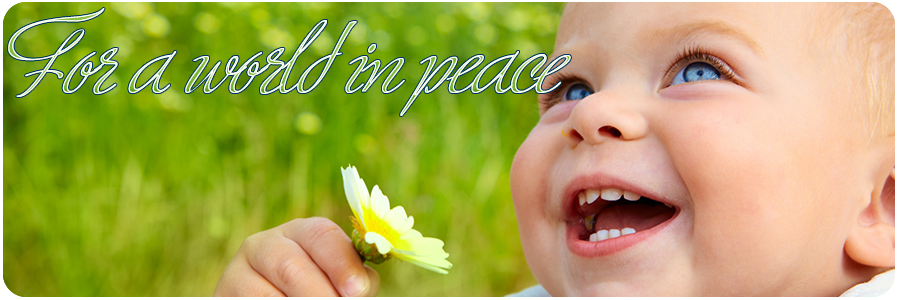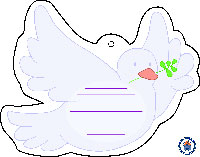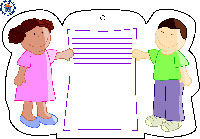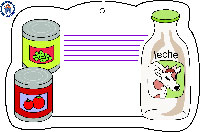Peace, in the wide sense of tolerance,
respect, mutual help, etc., is not consubstantial in human beings.
When we are born, we only live for ourselves and not to help others
or to share with society. We have to educate these concepts from
early childhood, from the moment when we begin shaping personalities.
For this reason, the School Day of Non Violence and Peace (SDNVP)
can be a great opportunity to bring into the minds of our children
the need to “build the defense of peace. It is particularly
important to keep the young minds away from violence and that
we guide them towards the virtues of tolerance, mutual understanding
and peace, not only of action, but also of thinking and expression”
as Dr. Koichiro Matsuura, Director General of UNESCO, has said.
BACKGROUND
INFORMATION AND OTHER ACTIVITIES |

On January 30 we observe the death of the national and spiritual
leader of India, Mahatma Gandhi, and shot to death by a hinduist
fanatic. Gandhi was born in Porbandar, India in 1869 and, after
graduating in law in England, he settled down in South Africa
where he fought against the discrimination towards Hindis. When
he returned to India he organized non violent resistance (his
philosophy, based on religion, had as foundation the principle
of non violence) against colonialism and non cooperation with
the British administration. He tried to stop the clashes between
Hindis and Muslims that took place after the independence in August
1947 (British colonialists imposed as a condition to withdraw
their troops the division of India in two states, India and Pakistan,
one hinduist and the other Muslim). He was imprisoned numerous
times; in 1937 he was the leader of an independence movement capable
of mobilizing millions of people. He was murdered on January 30.
On the other hand,
we also celebrate on this date the School Day of Non Violence
and Peace (SDNVP). This was initiated in 1964 by an Andalusian
School Inspector, Lorenzo Vidal. It is defined as an educational
day of peace, with the purpose of helping school children to reflect
on the fundamental message that “love is better than hate,
non violence better than violence and peace better than war”
(Vidal, 1972, P. 14). The SDNVP was recognized by the Ministry
of Education and Science through the Minister’s Order of
November 29, 1976.
While peace, cooperation
and solidarity, among other values that bring about peace should
always be present in the education of our children and teachers
should work the theme every day of the year, it is a good opportunity
to celebrate on January 30 the Fiesta of Peace with the intervention of all the children of the school, their
parents and local authorities. This is an opportunity to make
the schools tools for peace and understanding among people of
different education race, culture and religion.
When we talk about peace, our adult
minds will automatically recall the multiple war conflicts that
are still alive in the 21st century. However, Peace is much more.
The dictionary of the Royal Academy of Spanish Language lists
seven versions of the term.
In the survey conducted by our Association
around the world, teachers linked the world peace to:
• 38% harmony and inner well being
• 36% respect for your neighbor
• 16% a harmonious coexistence
• 11% love for the rest of the people
• 9% absence of military conflict
• 8% understanding towards others
• 8% settlement of a just society
• 5% dialogue between people
• 5% solidarity between countries and people
There is a link with the idea of
Peace in nearly all of these concepts and in what we have always
known as values such as respect, tolerance, understanding, help,
etc.
The same survey was very significant
and also curious when we applied it to children between three
and six years of age. Obviously, at those ages, the thoughts are
not as complex as those of the adults but to the question of “What
is peace” 82% of the children answered that it meant “not
hitting each other”:
From that point on dozens of “PEACE
definitions” came up, with which we could write an entire
course of curious things. So, among the multiple definitions,
we found:
• WHEN ONE DOES NOT BLEED (Mexico)
• MY MUM (El Salvador)
• SPEAKING WITHOUT SHOUTING (Argentina)
• WRITING A LETTER TO THE POLICE SO THAT THEY ARREST THOSE
WHO MUG OTHERS (Argentina)
• AVOID SAYING UNPLEASANT THINGS (Peru)
• THAT NOBODY DIES (Colombia)
• THAT PARENTS SHOULD NOT SMOKE OR THEIR LUNGS WILL TURN
BLACK (Spain)
It
is clear that young children live in their immediate surroundings
and that, at this age it if very complex to talk to them
about peace as the absence of armed conflicts because they
do not have much information or experience.
In any case, so
that children, when they become adults, link peace to
the absence of armed conflicts, as most of us do, we have
to begin building the pillar that, according to the DELORS
report is fundamental in their education: LEARNING TO
LIVE TOGETHER.
|
In a society that is becoming more
and more intercultural thanks to migration fluxes, it is important
to sow in the minds of the children what section d) of article
29 of the Convention on Child Rights says, that education should
aim at
d) preparing the child to lead a
responsible life in a free society, with a spirit of understanding,
peace, tolerance, equality of sexes and friendship among all countries,
ethnic, national and religious groups and people of Indian origin;
We
are not better people because we dress in a given way nor
are the women that cover their hair worse than others. We
are not better or worse because we have a different skin
shade. We really are all the same, but different in the
way of understanding specific conceptions of life. For this,
we have to learn to live together in peace and harmony,
respecting our beliefs and customs. |
ACTIVITIES FOR 365 DAYS PER YEAR |
We offer, via Internet, a series
of practical programmes for all the school course, directed towards
the formation of values to cover each one of the items that appeared
reflected in the previously mentioned survey on Peace:
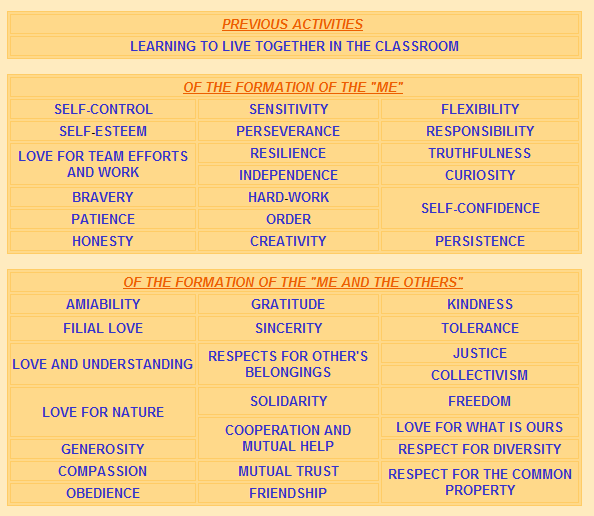
School
Day of Non Violence and Peace (SDNVP) can be a great opportunity
to bring into the minds of our children the need to “build
the defense of peace. It is particularly important to
keep the young minds away from violence and that we guide
them towards the virtues of tolerance, mutual understanding
and peace, not only of action, but also of thinking and
expression” as Dr. Koichiro Matsuura, Ex-Director
General of UNESCO, has said. |
We can do much for a world in Peace where we can live together
in harmony. For this, and coinciding with the SDNVP, from AMEI-WAECE
we propose an activity that could serve as an excuse to deal
in the classroom with the theme of the celebration. There
are many activities we could do in such a special day but at
AMEI-WAECE, we propose a simple, symbolic and charming activity.
SUMMARY OF THE ACTIVITY
After a guided conversation, the children will write
on a piece of paper their hopes for peace, friendship
and respect towards other children. On January 30 they
will send their wishes to the sky using helium balloons.
The attachments
includes the classical Peace Dove by Picasso but there
are also hearts for the children to love with, children
of different races to love and be friends with, food
for children who go hungry and whom we have to help,
etc.
MATERIALS
Color balloons, helium for the balloons, strings, paper,
scissors, color pencils.
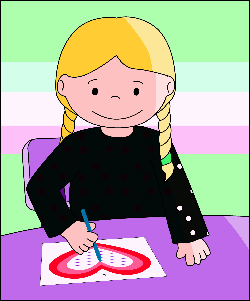 |
DESCRIPTION
OF THE ACTIVITY:
First, in the
assembly, the teacher will explain to the children
the reason for the celebration, why it is necessary
to live together and in peace, that this goal
can only be achieved by the efforts and hard
team work and that they can become the messengers
of peace in such a special day. The teacher
will also remind the children that peace is
something that should be present all year round
and not only on one day.
In the assembly,
the children can share their ideas and opinions.
After this, each child will write his/her “hopes
for peace” on a paper. The younger children
can color the illustration they have selected.
After the art
and writing sessions, the children will share
their work and message with their classmates.
NOTE: We can use
this activity for reading comprehension practice,
trying that each child explains his/her message
correctly and that the rest of the children
understand what is being read. |
The art or writing projects
will decorate our classroom until January 30.
On January 30, in the
morning, with the help and supervision of the teacher,
the children will cut out their work and punch a hole
in the top end. After this, they will tie the project
to a balloon.
At the chosen time,
with all the other children in the school, in the
school yard, the children will set their balloons
free, chanting together:
LET OUR
WISHES COME TRUE!
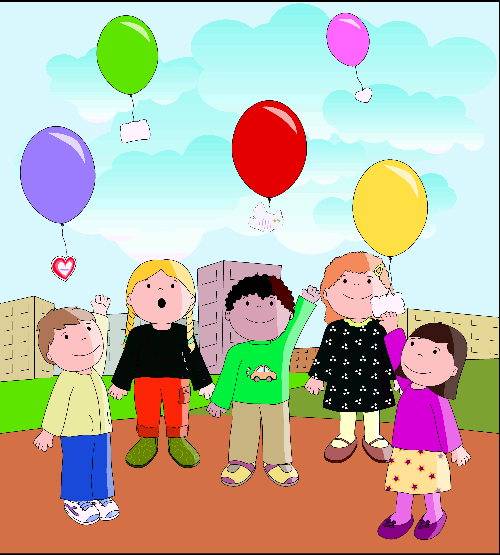
You can download the piece
of paper by clicking on the images:
|
|




